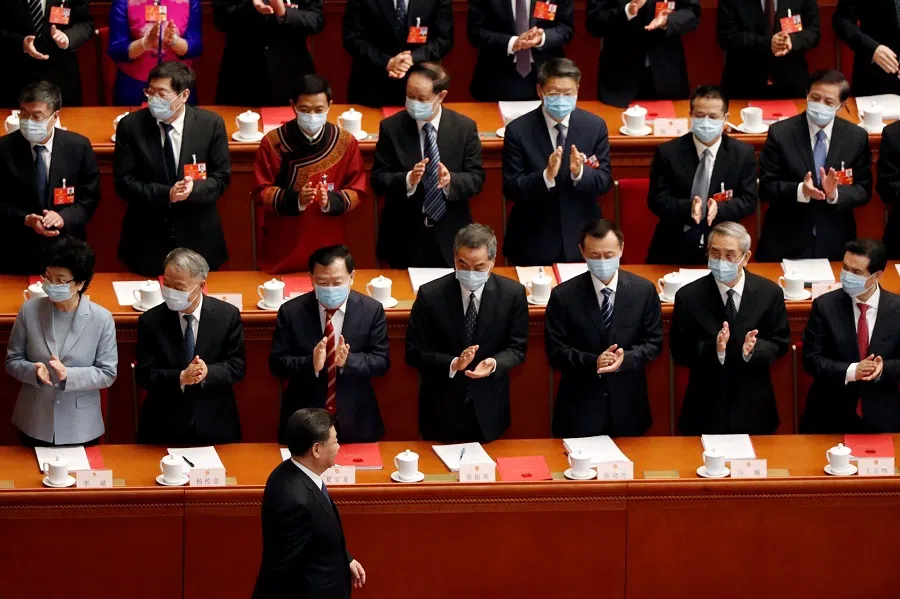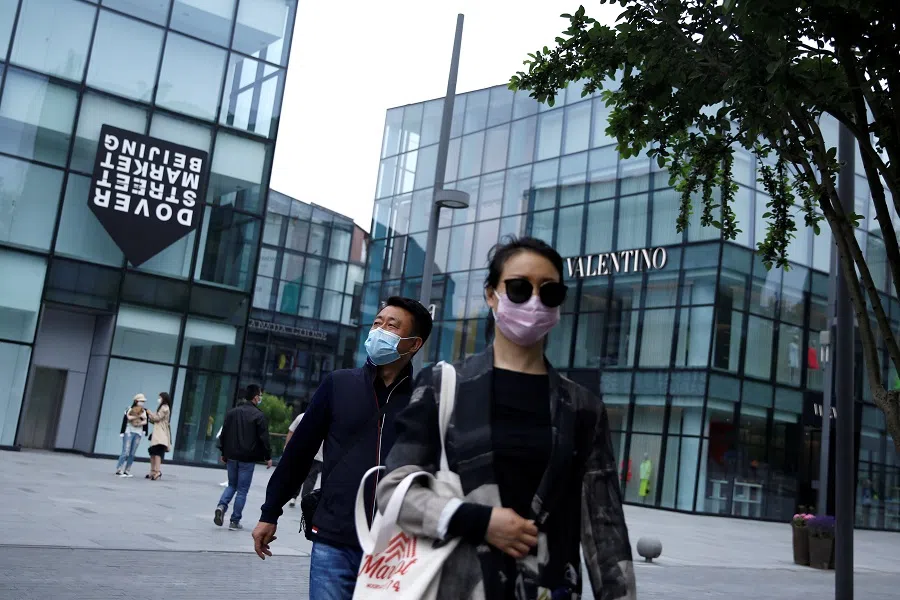China's turn towards domestic market amid global uncertainties - good for the world?
China is speeding up its construction of a "domestic circulation system" to complement its international efforts, in a bid to protect itself from any anticipated effects of decoupling from global supply chains. If the world wishes to cut itself off from China, it seems to say, so be it, as it can make its own plans.

Over the last few years, there has been a fundamental shift in the external environment for China's economic development. The rise of the anti-globalisation movement, the China-US trade war, the global coronavirus pandemic, the resultant breakage of global supply chains, the international geopolitical containment of China initiated by the US - all of these represent enormous challenges and uncertainties for China both now and henceforth in its external economic dealings.
China may have no choice but to turn from an export-directed strategy of internationalisation to an increased reliance on its domestic market.
To make matters even thornier, these external challenges may only be the beginning of China's troubles. Throughout over four decades of its economic reform, the Asian colossus had been going by a strategy of total integration into the international market, but this approach is now being put to a daunting test. China may have no choice but to turn from an export-directed strategy of internationalisation to an increased reliance on its domestic market. This is what the sustainable development of the Chinese economy requires intrinsically, as much as it is a necessity for guaranteeing China's economic security.
It was against such a backdrop that the Politburo Standing Committee of the Communist Party of China convened a meeting on 14 May, where it first proposed the laying out of a new development pattern - i.e., one in which the "domestic and foreign markets can boost each other". During a forum of the National People's Congress and Chinese People's Political Consultative Conference annual sessions a few days ago, Xi Jinping once again emphasised "a new development pattern where domestic and foreign markets can boost each other, with domestic market as the mainstay" and fostering "new strengths in international cooperation and competition under the new circumstances".
While the complete localisation of industrial and supply chains is impracticable for most countries, a "hyper-sized" market like China can indeed attempt to strive towards such a goal.
It is thus clear that domestic-international dual circulation has become China's new strategic choice. This change in strategy is bound to have a significant influence on China's and even the world's economy.

The building of China's domestic circulation system has actually always been ongoing. However, with the current international situation, the perfection of this system is now a matter of very great urgency. The country is seeking to speed up the domestic formation of complete industrial chains, supply chains and demand chains, as well as step up the circulation of resources between its eastern, central and western regions. Only not long ago has China once again put forth the agenda of energetically propelling the rapid development of its western region. These are all important initiatives for building the country's domestic circulation system.
China's current shortcomings lie in the weakness of the high-end links of its production and supply chains, which can be remedied in the future through technological innovation and international cooperation.
While the complete localisation of industrial and supply chains is impracticable for most countries, a "hyper-sized" market like China can indeed attempt to strive towards such a goal. China's immense market capacity should suffice to meet the requirements for economy of scale and agglomeration effects.
What China needs to go it alone
China currently plays a central role in global industrial and supply chains. The system of supply chains, service chains and value chains that forms around its industrial chains are the most complete in the world. The robust corporate ecosystem that has been formed integrates industrial packages, financing, productive services, open innovation in R&D and the supply of high-quality labour force, such that it is capable of providing a complete solution for commercial activities. This is the most powerful magnet and cohesive agent that attracts multinational corporations.

China's current shortcomings lie in the weakness of the high-end links of its production and supply chains, which can be remedied in the future through technological innovation and international cooperation. That aside, the building of China's new infrastructure, centred around 5G technology, big data and artificial intelligence, will also provide important support for the formation of complete industrial and supply chains.
As far as domestic consumption demand is concerned, China is a "hyper-sized" consumer market with 1.4 billion people.
The building of China's domestic demand chains is another vital part of the domestic economic circulation. The greatest impact on the country from the ongoing global coronavirus pandemic is actually from the foreign demand end. With the sudden and dramatic drop in foreign trade demands, it is difficult for outward-facing enterprises to promptly find substitute demands within China, hence the strong repercussions. Even after the pandemic is over, demands from the European and American market will continue to weaken. For these reasons, the circulation on China's domestic demand end becomes an essential link for the establishment of a complete domestic circulation system.
As far as domestic consumption demand is concerned, China is a "hyper-sized" consumer market with 1.4 billion people. Its rapidly growing middle class is at least over 400 million strong, which endows this populous country with the strongest purchasing power in the whole world. The point of building China's domestic demand system is not only to provide a way out for outward-facing enterprises within the country (i.e., through rechanneling commodities meant for export to domestic sale), but also to secure a solid guarantee of profits for domestic enterprises in general. This is a vital link for ensuring the building of domestic industrial and supply chains. After all, enterprises would lose their motivation for development and innovation if demands from the consumer market are lacking.
Blazing new trails internationally
In the matter of participating in the international economic circulation, China has been working hard in opening up new avenues in recent years. For quite a long time, the international circulation has been characterised by a South-North flow dominated by the developed countries of the West. Riding on their technological, capital and management advantage, developed countries in the northern hemisphere place their orders to developing countries in the southern hemisphere. With their low-cost advantage, the developing countries in the south subsequently proceed with production and processing, and then export the consumer goods thus churned out back to the developed countries in the north. In the process of its economic reform, China had embedded itself deep within this circulation system. However, the whole system puts developing countries in a subordinate, unfavourable position. In addition, it is now suffering from a lack of impetus.
Although the developing countries or emerging economies may not each be very powerful on their own in terms of economic status, consumption power, technological prowess and so on, their combined capabilities in toto are enormous.

In China's future participation in the international circulation, it will not only continue to function within the above-mentioned South-North circuit, but also strive to blaze new trails. The Belt and Road Initiative, for example, is about opening up new international circulation based on an East-West flow. It will, on one hand, rope in developing countries that had been overlooked; and, on the other hand, also enable the participation of developed countries in Europe and elsewhere via its open platform, which means it is more inclusive than the South-North global circulation paradigm. Although the developing countries or emerging economies may not each be very powerful on their own in terms of economic status, consumption power, technological prowess and so on, their combined capabilities in toto are enormous. Reinforced cooperation with these players is China's new channel for participating in international circulation.
East Asia is going to be the centre of gravity for the global economy, and China is geographically well-placed to link up Northeast and Southeast Asia and thereby establish a system of cross-regional industrial and supply chains.
China does not strive to supersede the original South-North circulation system with this East-West version. Rather, the idea is to complement the original circuit. Through the two mutually complementary systems, China hopes to strengthen its connections with both the developed countries and the developing countries simultaneously, so as to take part in the international circulation from multiple angles. Some of the initiatives now being pushed forward by China - such as the new strategy of developing western China, the plans for the Hainan Free Trade Port - can each culminate in an important platform for participating in the international circulation.
International regional cooperation key
The circulation of global resources is supposed to be most favourable for raising resource efficiency, but globalisation is being severely disrupted today by geopolitics, so much so that circulation across the globe is threatened by huge uncertainties. The development of international regional cooperation is, therefore, a matter of particular importance.
China can, for example, work with Northeast Asia and ASEAN to consolidate tightly-knit regional industrial and supply chains. East Asia is going to be the centre of gravity for the global economy, and China is geographically well-placed to link up Northeast and Southeast Asia and thereby establish a system of cross-regional industrial and supply chains. With ASEAN's 10+3 cooperation framework and the building of China's New International Land-Sea Trade Corridor, pivotal platforms for promoting international regional circulation can take shape in time.
Among these regional integrations, ASEAN-China circulation will be of great importance. ASEAN has surpassed the US as China's second largest trading partner in 2019, and was its largest trading partner in the first three months of 2020. It could replace the EU to become China's largest trading partner within one or two years once the UK fully exits the EU, after the post-Brexit transition period.

China's new overarching strategy seeks mutual reinforcement between domestic and international circulation. As the anti-globalisation movement and cries for decoupling from China grow stronger in the international arena over time, the global circulation system will be overshadowed by tremendous uncertainties. With a balance between economic efficiency and economic security in mind, China strives to construct a grand dual system that yokes together both domestic and international circulation. This will be good for spreading out China's strategic risks and maintaining steady development in the long run.
The stability of China's domestic circulation system will be good for the stability of the broader, global economic circulation.
The current global circulation system is showing fragmentation under the strain of geopolitical disruptions. Such an unfavourable external environment is probably not going to get better in the near future. For this reason, when China has established its domestic circulation system as planned, it can create a relatively stable and controllable environment. This will help China to expand the reach of its strategic emerging industries domestically, and also facilitate the transformation and upgrading of industrial and demand chains.
In the new development strategy, China sees its domestic circulation as a key mainstay, a minimum guarantee for its "bottom-line thinking". Even if the world outside were to be hit by major supply-and-demand repercussions, China's domestic circulation system should still be able to maintain the basic operations of its economy.
China's new overarching strategy sees domestic circulation and its international counterpart as mutually coordinating and reinforcing, rather than mutually exclusive. When the domestic circulation is running smoothly, China would be better empowered for deep participation in the grand international circulation, and thus gain a new competitive edge in the international market. The stability of China's domestic circulation system will be good for the stability of the broader, global economic circulation. China's participation in the international circulation will, in turn, help Chinese enterprises carry out their globalised placement, not to mention create more opportunities and provide external impetus for development for China's domestic economic circulation.

One thing can be foreseen: the external environment for China's development will face harsh challenges for a long time to come, so China will have to rely more on its own strength in its pursuit of development. Seen in this light, the establishment of the domestic-international dual circulation is a long-term strategy, which means the corresponding system-building and reformative measures need to proceed in advance.
In the long run, China's development depends on how sound its internal systems are, as well as how well it upgrades its governance capabilities.
More needs to be done: the perfection of the market economic system is to be accelerated, the country's drive for opening up intensified, a gamut of international best practices adopted, the best business environment created in accordance with the highest international standards, and an environment provided for equal competition for the whole spectrum of businesses from the state-owned, private, to the international enterprises.
In the long run, China's development depends on how sound its internal systems are, as well as how well it upgrades its governance capabilities. Notably, China has recently introduced in quick succession a series of policies for deepening its reform and opening up. These include the new Foreign Investment Law, the opening up of the capital market, the deepening of the market economic system, the reform of state-owned enterprises, the new strategy of developing western China, the speeding up of the building of the Hainan Free Trade Port, the reform of the factor market, and so on. They are all part of the groundwork for actualising the new grand strategy outlined in this essay. In other words, plans for a new development pattern have already been put into motion in China. Whether or not they will succeed is something we shall eagerly look out for.





